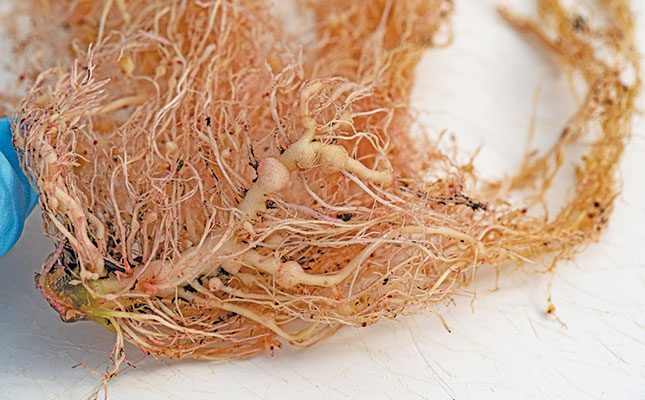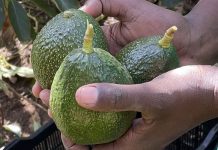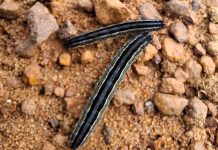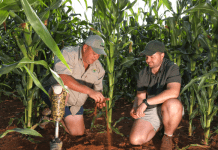
Photo: USDA
Plant parasitic nematodes have emerged as a major threat to smallholder farmers in sub-Saharan Africa, who account for about 90% of agricultural production in the region, said Dr Hannah Karuri of the University of Embu in Kenya at the XIX International Colloquium on Soil Zoology being held in Cape Town.
She said that changes in agricultural practices, such as the increased use of fertilisers, pesticides, herbicides and tillage, had resulted in soil degradation and reduced soil fertility on many farms. This in turn is leading to higher incidents of plant parasitic nematode problems and associated yield losses.
The situation is exacerbated by climate change, according to Karuri, resulting in pests like nematodes invading new areas, becoming more abundant and pathogenic. According to one of her research papers, annual global crop yield losses due to plant parasitic nematodes were estimated at US$80 billion (about R1,42 trillion) in 1998.
One of the problems with plant parasitic nematodes is that many smallholder farmers are unaware or oblivious of the threat, often blaming their losses on something else, like nutrient deficiencies or diseases.
“When we tell farmers they are suffering production losses because of plant parasitic nematodes, they mistakenly think we talk about earthworms. To create awareness in Kenya, we have started taking farmer group leaders to plant health labs to view these minute worm-like creatures under a microscope, so that they can convince the rest of the group of the existence of these organisms,” Karuri said.
She added that a few smallholder farmers, who were aware of the threat but unsatisfied with control results, resorted to prayer out of desperation.
Another problem was that plant parasitic nematodes were primarily managed using resistant crop varieties, cultural practices, nematicides and biological control agents. Karuri said that many of these measures were unviable for smallholder farmers because of their high cost, impact on the environment, non-target organisms and human health.
She proposed a more holistic approach, based on techniques that had been previously tested and proven to be more sustainable and cost-effective than nematicides. These included the planting of resistant crops and production practices, such as crop rotation, minimum tillage, cover crops, organic and green manure, to build soil diversity and health.
“The building of soil biodiversity will result in more beneficial organisms that will help to keep problem organisms in check. It will also help to improve soil health and thereby increase the resilience of plants,” she said.
Building soil biodiversity will also bring various other benefits, according to her, such as improving the climate resilience of a production system by improving the water holding capacity of the soil and preventing erosion.
Karuri emphasised the importance of soil biodiversity for healthy soil processes and functions, and its impact on the nutritional value of food and human health.
“We need to do more to protect soil biodiversity, from developing indicator systems that assess biodiversity and ecosystem functions to the monitoring of biodiversity and potential threats, development of agricultural systems that sustainably produce food while conserving the soil and cross border policies on the protection of soil biodiversity.”
She added that greater investment in research on soil biodiversity, health and agriculture was needed, and that smallholder farmers should be involved in research and development of practices that promote soil biodiversity, to improve their sustainability.










